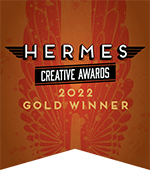
Clichés in marketing & why we love to hate them (and make fun of them)
Do you find yourself groaning with a vengeance every time you read a new statement that references “unprecedented times”? Did it make your skin crawl to realize that “impact”, which previously referred to something smashing into something else, was used incorrectly so many times its definition had to be changed in the dictionary?
Us too. LITERALLY us too.
If you don’t get the joke re: literally, please go straight to word jail, do not pass go and do not collect any joy from this sarcasm-laden blog.
Clichés and crappy word usage are the direct and ugly descendant of an unwillingness to be creative. And wow, does there ever seem to be a lot of that unwillingness floating around. In a world where carpe diem has been replaced with yolo, we can’t say we are overly surprised by the trend towards copycatting and cliché, but that does not make the annoying impact of stale brand messaging hit any less hard.
(Again, just calling attention to the joke on impact here).
We understand some people truly do yearn to live, laugh & love and will use that saying to represent their innermost being without a hint of irony. But, we would put a proverbial hot poker in our eye than promote our brand with a sentiment so overused as the trifecta of millennial wanderlust.
In a world full of “professional writers/influential bloggers” who lack the tools to write effectively or blog influentially, it’s easy to get caught up in half-assed messaging. However, smart strategic communications are better for your brand and business.
Not convinced? Let’s look at two brands that changed the world with splendidly simple and strategically applied words.
Before De Beers decided they wanted to sell more diamonds, engagement rings were made up of every different gemstone – with the colourful variety earning far more popularity than their clear counterparts. But, in 1947, the company launched the “A diamond is forever” campaign and boom – as sure as Bob is your uncle, the world decided that only a blood-saturated stone was good enough to say “I do” to.
Another home run in the creative marketing department comes from Maybelline. In 2013, a company surveyed more than 1.5 million people and their tagline (which dates all the way back to the 90’s), “Maybe she’s born with it,” is still THE most recognizable out of more than 150 different brands’ campaigns. This slogan won out against “Just do it”, “Think Different,” and many other tip-of-the-tongue taglines. Plus, it’s been used successfully for countless decades, inclusive of a huge 2020 resurgence thanks to a TikTok campaign using the hashtag. This heavy hitter knocked 51.7 million views out of the park and that doesn’t include the hundreds of thousands of uses + plays on slogans on Twitter and Instagram.
We want to belong to the ranks of brand marketers that change the entire world, rather than rely on tired, overly trendy statements. If you want to take up that challenge too, we want to chat.
When you fail to be creative, your messaging decays into the world of clichés. And, believe it or not, high-value audiences are smart enough to recognize it. “Now more than ever” (just kidding, we hate that phrase too) it’s essential to be authentic, straightforward and original. This power trio requires a great deal of thought, work and a willingness to break free from clichés, regardless of how many t-shirts we see them on. Achieving the kind of thought leadership that moves mountains and work schedules is where we come in.
If you are like us and believe that the over usage of grandiose language is one of the most plague-like elements of this pandemic, let’s talk about how to create unprecedentedly awesome content that will “stand the test of time” and impress even the most morose of us.


